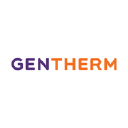/ factorpad.com / stocks / f97xgt.html
An ad-free and cookie-free website.
Our quantitative data points are meant to provide a high-level understanding of factors in equity risk models for Gentherm Inc. Portfolio managers use these models to forecast risk, optimize portfolios and review performance.
We show how THRM stock compares to 2,000+ US-based stocks, and to peers in the Manufacturing sector and Motor Vehicle Gasoline Engine and Engine Parts Manufacturing industry.
Please do not consider this data as investment advice. Data is downloaded from sources we deem reliable, but errors may occur.
 Gentherm is a global developer and marketer of innovative thermal management technologies for a broad range of heating and cooling and temperature control applications. Automotive products include variable temperature Climate Control Seats, heated automotive interior systems (including heated seats, steering wheels, armrests and other components), battery performance solutions, cable systems and other electronic devices. Medical products include patient temperature management systems. The Company is also developing a number of new technologies and products that will help enable improvements to existing products and to create new product applications for existing and new markets. Gentherm has more than 11,000 employees in facilities in the United States, Germany, Canada, China, Hungary, Japan, Korea, North Macedonia, Malta, Mexico, United Kingdom, Ukraine, and Vietnam.
Gentherm is a global developer and marketer of innovative thermal management technologies for a broad range of heating and cooling and temperature control applications. Automotive products include variable temperature Climate Control Seats, heated automotive interior systems (including heated seats, steering wheels, armrests and other components), battery performance solutions, cable systems and other electronic devices. Medical products include patient temperature management systems. The Company is also developing a number of new technologies and products that will help enable improvements to existing products and to create new product applications for existing and new markets. Gentherm has more than 11,000 employees in facilities in the United States, Germany, Canada, China, Hungary, Japan, Korea, North Macedonia, Malta, Mexico, United Kingdom, Ukraine, and Vietnam.
Many of the following risk metrics are standardized and transformed into quantitative factors in institutional-level risk models.
Rankings below represent percentiles from 1 to 100, with 1 being the lowest rating of risk.
Stocks with higher beta exhibit higher sensitivity to the ups and downs in the market. (↑↑)
Stocks with higher market capitalization often have lower risk. (↑↓)
Higher average daily dollar volume over the past 30 days implies lower liquidity risk. (↑↓)
Higher price momentum stocks, aka recent winners, equate to lower risk for many investors. (↑↓)
Style risk factors often include measures of profitability and payout levels.
Companies with higher earnings generally provide lower risk. (↑↓)
Companies with higher dividend yields, if sustaintable, are perceived to have lower risk. (↑↓)
/ factorpad.com / stocks / f97xgt.html
A newly-updated free resource. Connect and refer a friend today.